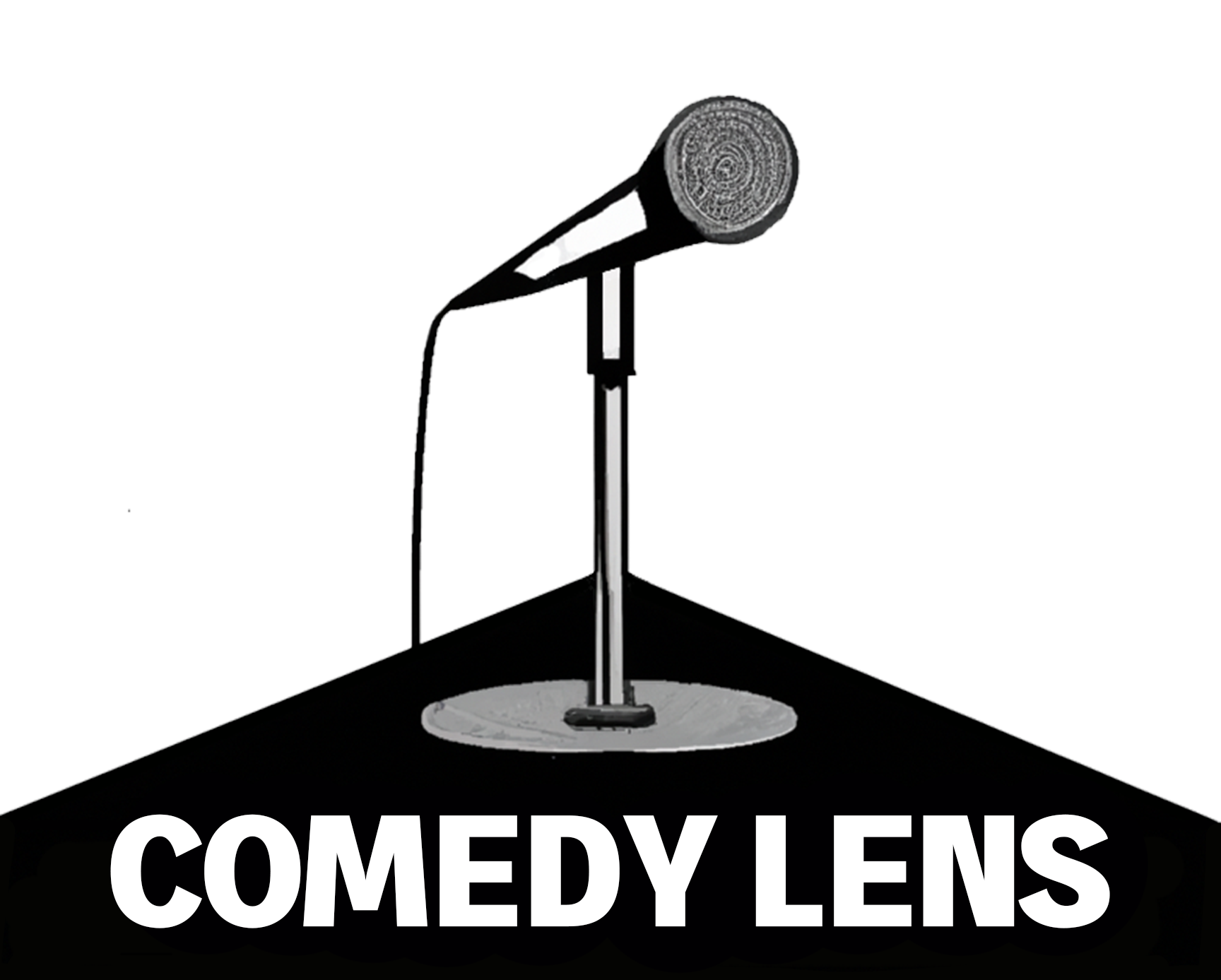April 22, 2023

The history of stand-up comedy can be traced back to its origins in the 19th century, when comic lecturers such as Mark Twain toured the United States. However, the modern form of stand-up comedy as we know it today began to take shape in the 1840s with minstrel shows that perpetuated racial stereotypes in the United States. Soon after, American vaudeville emerged and, along with the later Chitlin’ Circuit, produced the founding figures of this unique form of entertainment.
As stand-up comedy evolved, performers pushed the boundaries of what was considered acceptable, often crossing boundaries and breaking taboos to elicit laughter from their audiences. Icons like George Carlin challenged societal norms and famously challenged the status quo through their comedic acts. Stand-up comedy has become an art form that allows comedians to shed light on various aspects of life while satirizing human behavior, politics, and culture from a variety of perspectives.
Over time, stand-up has seen immense growth and popularity, thanks in part to the rise of television, radio, and now streaming platforms like HBO and Netflix. The history of stand-up comedy is rich and varied, encompassing the lives and careers of countless performers who have dedicated themselves to making people laugh while also reflecting on and critiquing the world around them. As a result, stand-up comedy has become an integral part of contemporary entertainment and a powerful form of social commentary.
Origins of Stand-Up Comedy
Stand-up comedy, as we know it today, has its roots in various forms of comedic expression throughout history. From ancient social gatherings to the development of modern comedy in the United States, comedy has transformed in context, style, and delivery over time.
Ancient Forms of Comedy
In ancient times, humor was an integral part of social gatherings and religious ceremonies. People shared jokes and anecdotes to entertain and amuse their audiences. The use of humor as a form of expression predates the more structured format of modern stand-up comedy. For example, ancient Greek and Roman theater often incorporated comedy and satire into their plays, illustrating the enduring appeal and power of laughter.
Commedia Dell’Arte
The Commedia dell’Arte, an influential form of theater that originated in 16th-century Italy, laid the groundwork for many elements of modern comedy. The Commedia’s improvisational and highly expressive style of comedy, which often used masks, physical humor, and stock character types, paved the way for a more performance-oriented and audience-interactive approach to comedy that would later influence stand-up comedians.
In the 19th century, American comic lecturers such as Mark Twain began touring the country. The modern form of stand-up comedy began to take shape in the late 19th and early 20th centuries with the emergence of vaudeville and burlesque shows in New York City’s vaudeville theaters. The evolution of stand-up comedy continues to this day, reflecting the ever-changing culture and society in which it exists.
Vaudeville and the Birth of Modern Stand-Up
The history of stand-up comedy can be traced back to the variety shows and vaudeville theaters of the late 19th and early 20th centuries. Performers would take the stage and deliver humorous monologues, often filled with witty observations and anecdotes. The mixture of acts and styles provided the perfect environment for the growth of this new form of comedy.
Vaudeville’s Influence
Vaudeville was a popular form of entertainment in the United States from the mid-1890s until the early 1930s, consisting of 10 to 15 individual unrelated acts which included magicians, acrobats, comedians, trained animals, jugglers, singers, and dancers (Britannica). The diverse nature of these shows played a significant role in shaping stand-up comedy as we know it today.
The competitive atmosphere of vaudeville forced performers to develop unique talents and comedic styles to stand out from the crowd. It was not uncommon for comedians to borrow elements of other acts and blend them with their own humor, creating new and innovative approaches to stand-up. Many of the modern comedy techniques were cultivated during this period, setting the stage for the comedy landscape that would follow in the coming decades.
The Transition to Modern Stand-Up
Over time, the popularity of vaudeville began to wane, leading to changes in the way comedians performed their acts. According to Britannica, stand-up comedy in the United States had its origins in 19th-century comic lecturers such as Mark Twain, before emerging as a populist entertainment in vaudeville in the early 20th century.
With the decline of vaudeville, comedians took their acts to a variety of other venues, including nightclubs, theaters, and radio shows. A new style of stand-up began to emerge, with many performers focusing on storytelling and observational humor. The transition from vaudeville to modern stand-up helped shape a distinctly American form of comedy that would continue to evolve throughout the 20th century and beyond.
The influence of vaudeville on the development of stand-up comedy is undeniable. The rich and diverse environment it provided allowed for the growth and evolution of comedic styles, solidifying its place in the history of stand-up. The transition from vaudeville to modern stand-up comedy marked a significant shift in the way performers entertained their audiences, giving birth to the unique and innovative art form we enjoy today.
The Golden Age of Stand-Up Comedy
Comedy Clubs and Growth of the Industry
In the 1970s and 1980s, stand-up comedy experienced significant growth in popularity as comedy clubs began popping up across the United States. The rise of comedy clubs allowed for a wider range of comedians to perform and hone their craft, leading to an explosion in the number and variety of comedic voices. These clubs, such as The Comedy Store and The Improv, often served as launching pads for the careers of many famous comedians.
Television also played a crucial role in the growth of stand-up comedy during this era. Shows like The Tonight Show Starring Johnny Carson and later ‘The Tonight Show Starring Jay Leno and The Late Show with David Letterman provided a national platform for stand-up comedians to perform and reach a wider audience. In many cases, a successful appearance on one of these shows could instantly catapult a comedian’s career to new heights.
Influential Comedians of the Era
During the golden age of stand-up comedy, a number of influential comedians emerged who pushed the boundaries of comedy and shaped its future. Some of the most notable figures from this era include
- Richard Pryor – Known for his raw, autobiographical style and unflinching examination of racial issues, Pryor had a significant impact on the development of stand-up comedy.
- George Carlin – With a career spanning more than four decades, Carlin was known for his sharp wit and social commentary. His groundbreaking routine “Seven Words You Can Never Say on Television” sparked a public debate about free speech and led to a 1978 Supreme Court obscenity case.
- Steve Martin – A versatile performer, Martin developed a unique brand of humor that incorporated physical comedy and absurdity into his stand-up routines.
Eddie Murphy – A star of Saturday Night Live in the early 1980s, Murphy’s stand-up career was marked by his charismatic stage presence and often controversial material. - Joan Rivers – A trailblazer for women in comedy, Rivers was known for her acerbic wit and fearless brand of humor, which often focused on taboo subjects.
These comedians, along with many others, helped define the golden age of stand-up comedy, pushing the boundaries of what was considered acceptable humor and paving the way for future generations of performers.
Evolution of Stand-Up Comedy Styles
Stand-up comedy has gone through several transformations since its inception. The art form has adapted to different eras, cultural movements, and audience preferences, resulting in various styles that have emerged in the history of stand-up comedy.
Observational Comedy
Observational comedy emerged as a popular style in the stand-up comedy scene. This style primarily focuses on finding humor in everyday life situations and experiences. Comics who practice observational comedy provide keen insights into the mundane aspects of life, allowing audiences to relate and laugh at familiar experiences.
Some well-known comedians, such as Jerry Seinfeld and Ellen DeGeneres, have mastered the art of observational comedy, making it a cornerstone of their performances. Their unique perspective and witty commentary highlight the absurdities and quirks in daily activities that might otherwise be overlooked.
Political Satire
Another prominent style of stand-up comedy is political satire, which uses humor to criticize and poke fun at political figures, events, and policies. This style has been used as a medium to convey important messages and inspire social change by shedding light on important issues.
Throughout history, many comedians have used political satire to great effect. Comedians such as George Carlin, Jon Stewart, and Lenny Bruce have contributed to the rich tradition of political satire, using their platform to challenge authority, question the status quo, and hold politicians accountable through humor.
Alternative Comedy
Alternative comedy emerged as a reaction to the mainstream comedy scene. This style incorporates unconventional humor and experimental performance techniques, often blending various genres and forms of entertainment such as storytelling, sketch comedy, and improv.
Comedians like Andy Kaufman and Tig Notaro have been pioneers of alternative comedy, pushing boundaries with their groundbreaking performances. These comics often challenge societal norms and conventional expectations by introducing innovative content and unconventional delivery styles.
Overall, the evolution of stand-up comedy styles has enriched the art form in countless ways. Observational comedy, political satire, and alternative comedy are just a few examples of how stand-up has continuously evolved to keep audiences entertained and engaged throughout the years.
Stand-Up Comedy in Media
Television and Comedy Specials
Stand-up comedy has had a significant presence in television since its early days. Pioneers like Milton Berle and Johnny Carson played crucial roles in promoting the art form through their TV shows. With the growth of cable television in the 1980s, stand-up comedians found an even wider audience, and many got their big breaks on shows such as “The Tonight Show” and “Late Night with David Letterman.”
As the medium evolved, televised comedy specials became a popular format to showcase stand-up routines. Networks such as HBO and Showtime produced and aired numerous comedy specials featuring famous comedians of the time. In recent years, streaming platforms like Netflix, Amazon Prime, and Hulu have become the primary distributors for stand-up comedy specials, giving comedians unprecedented global exposure.
Stand-Up in Film
Stand-up comedy has also made its way into films, with several movies focusing on the lives and careers of stand-up comedians or using their material as a central theme. Examples of such films include “Punchline” (1988), starring Tom Hanks and Sally Field, and “Funny People” (2009), directed by Judd Apatow and starring Adam Sandler.
In addition to being featured in movies, stand-up comedians have often transitioned into acting roles in Hollywood. Stars like Eddie Murphy, Whoopi Goldberg, and Robin Williams successfully crossed over from stand-up stages to the big screen, showcasing their talent in a variety of film genres.
International Stand-Up Comedy
While stand-up comedy has its roots in the United States, it has grown into a global phenomenon, with thriving comedy scenes in numerous countries around the world. As diverse comedic talents gained exposure through television, film, and the internet, international stand-up comedy has left a significant mark on global culture.
Notable Comedy Scenes Outside the U.S.
In the United Kingdom, stand-up comedy has a rich history dating back to the 18th century, with its origins in the music hall and variety theater. Today, renowned venues such as the Edinburgh Fringe Festival provide a platform for both established and emerging comedic talents.
Beyond the U.K., there is a burgeoning comedy scene in Australia, where comedians such as Tim Minchin and Hannah Gadsby have gained international recognition. Other notable comic hubs include Canada, with comedians like Jim Carrey and Russell Peters originating there, and India, where stand-ups such as Vir Das and Kanan Gill have garnered large followings.
Influence on Global Culture
International stand-up comedy has influenced global culture in many ways. For example, comedic styles and techniques often transcend cultural and linguistic barriers, allowing audiences to appreciate humor from different perspectives. The rise of streaming platforms such as Netflix has allowed comedians from diverse backgrounds to reach a global audience, leading to greater representation and inclusivity.
In addition, stand-up comedians from around the world are tackling social, political, and cultural issues through their performances, encouraging dialogue and fostering understanding between different societies. As a result, international stand-up comedy continues to have a significant and positive impact on global culture.
The Future of Stand-Up Comedy
Technological Innovations
As technology advances, stand-up comedy is evolving to adapt and thrive in the modern age. Virtual reality (VR) and augmented reality (AR) are some of the technologies that are influencing the future of the genre. Immersive experiences in VR can give audiences a sense of presence, making them feel as if they are physically present in a comedy club, even if they are watching a show remotely.
Live streaming platforms have also become popular, allowing stand-up comedians to reach a wider audience digitally. Pay-per-view shows and digital ticket sales are becoming the norm, allowing performers to monetize their craft without the traditional brick-and-mortar comedy clubs. In addition, comedians are using social media platforms to showcase their work and engage with their fans, increasing their visibility and brand value.
Emerging Trends
In addition to technological changes, emerging trends in stand-up comedy are shaping the future of the art form. There is a growing emphasis on diversity and inclusivity, with more comedians from diverse backgrounds gaining recognition and influencing the comedy landscape. This shift is leading to a new generation of stand-up comedians who are challenging conventions and bringing fresh perspectives to the stage, according to HowlRound.
Another trend is the growing popularity of themed or niche comedy shows that cater to specific interests and demographics. For example, some comedy shows focus on political satire or explore topics such as mental health, relationships, and identity. This trend allows comedians to develop unique styles and provide audiences with a more tailored experience.
In addition, the globalization of stand-up comedy has led to the rise of international comedic talent and a broader range of comedy styles. As borders blur and cultures intersect, audiences gain access to different perspectives and humorous insights that enrich the stand-up comedy scene.
Conclusion
Stand-up comedy has come a long way since its origins in ancient social gatherings and religious ceremonies. From the Commedia dell’Arte to the vaudeville era to the golden age of stand-up comedy, the art form has evolved and adapted to different eras, cultural movements, and audience preferences. Today, stand-up comedy remains a popular form of entertainment, with comedians using their platform to shed light on various aspects of life while satirizing human behavior, politics, and culture. With the rise of television, streaming platforms, and film, stand-up comedy has become an integral part of contemporary entertainment, showcasing the talent and creativity of comedians from around the world.
“For me, comedy starts as a spew, a kind of explosion, and then you sculpt it from there, if at all. It comes out of a deeper, darker side. Maybe it comes from anger, because I’m outraged by cruel absurdities, the hypocrisy that exists everywhere, even within yourself, where it’s hardest to see.”
Robin Williams
Related Articles
Trae Crowder Releases New Comedy Special: ‘Trash Daddy’
Comedian Trae Crowder, known for his viral videos as the "Liberal Redneck," has once again taken the comedy world by storm with his sophomore stand-up special, Trash Daddy. Released on YouTube via 800 Pound Gorilla Media on March 13, 2025, this one-hour special...
Story Warz: The New Comedy Podcast of Deception and Detection
Looking for a fresh comedy podcast that will have you laughing and guessing? Story Warz combines the perfect mix of storytelling, comedy, and competitive gameplay. Hosted by renowned Legion of Skanks comedians Big Jay Oakerson and Luis J. Gomez, this innovative...
Adam Ray Release New Comedy Special: ‘Like And Subscribe’
Adam Ray returns with the release of his third comedy special, Like and Subscribe. A beloved figure in comedy circles, Ray has made a name for himself not just on stage and podcasts, but on the big screen as well, with impressive roles that showcase his dynamic...




